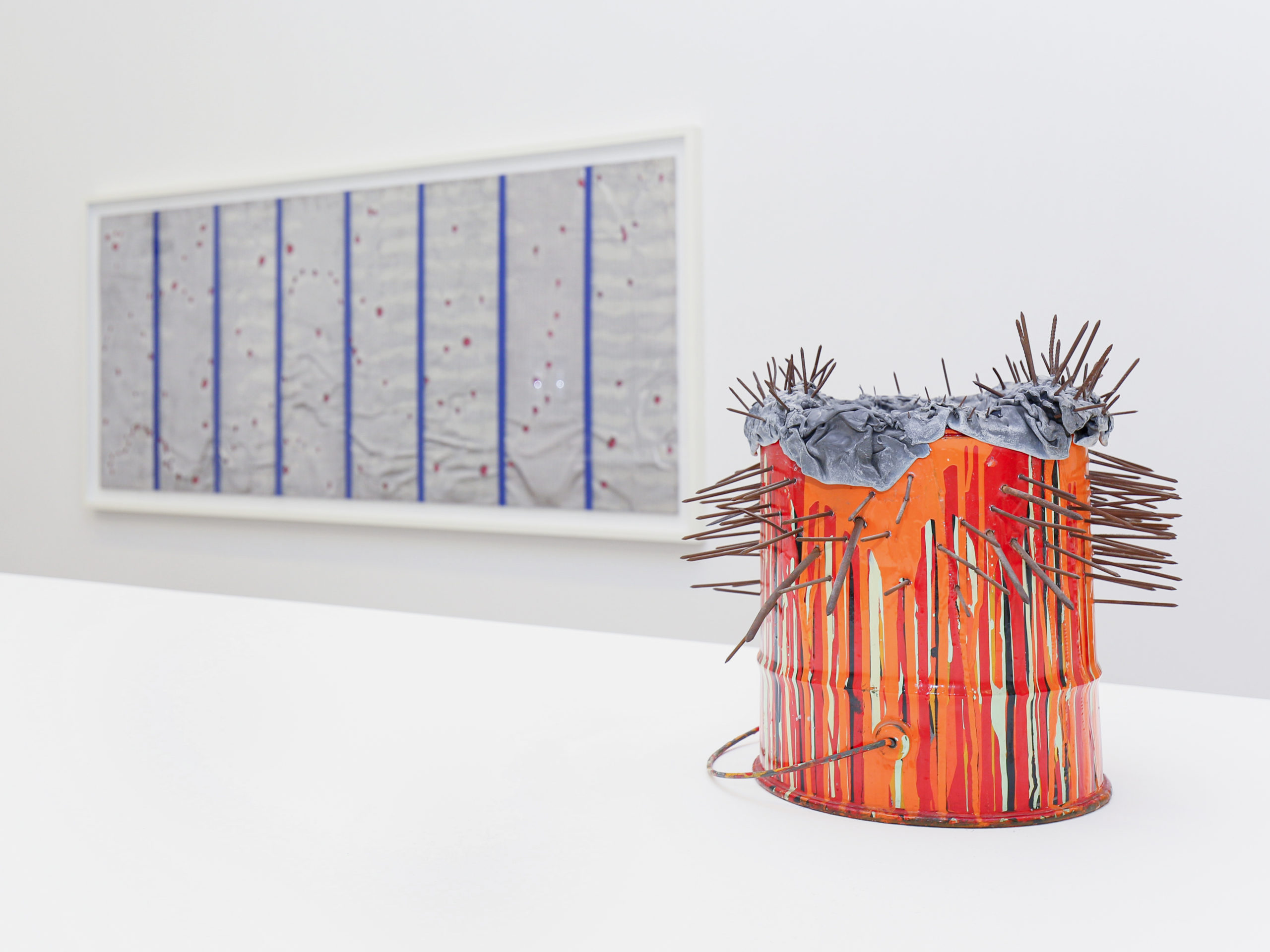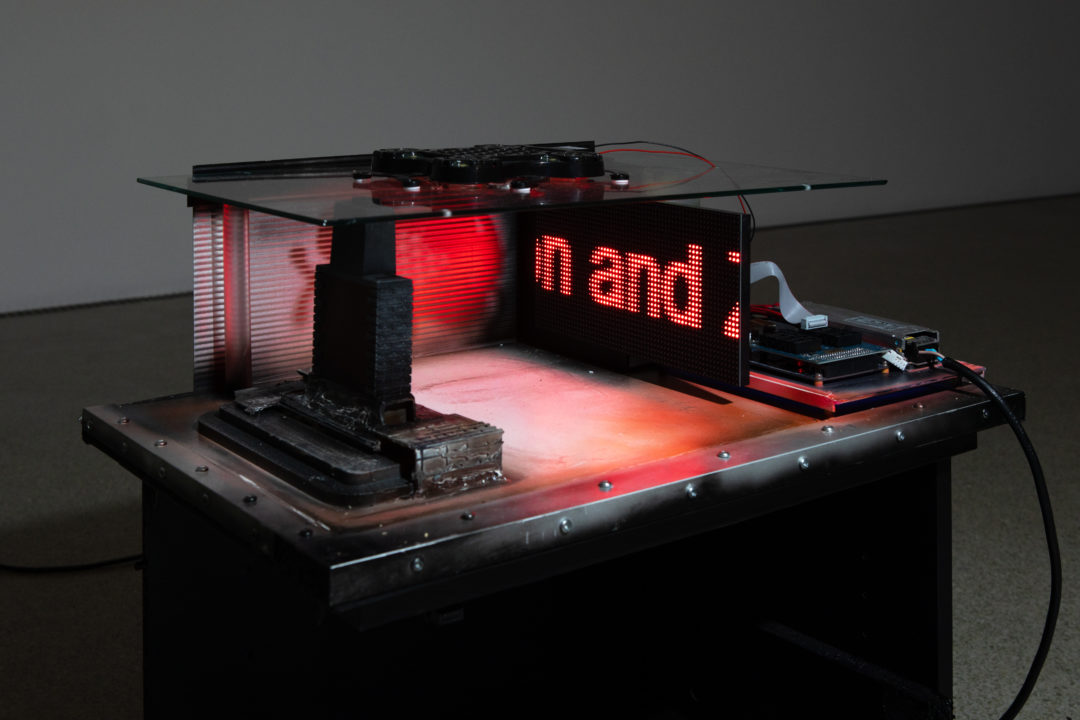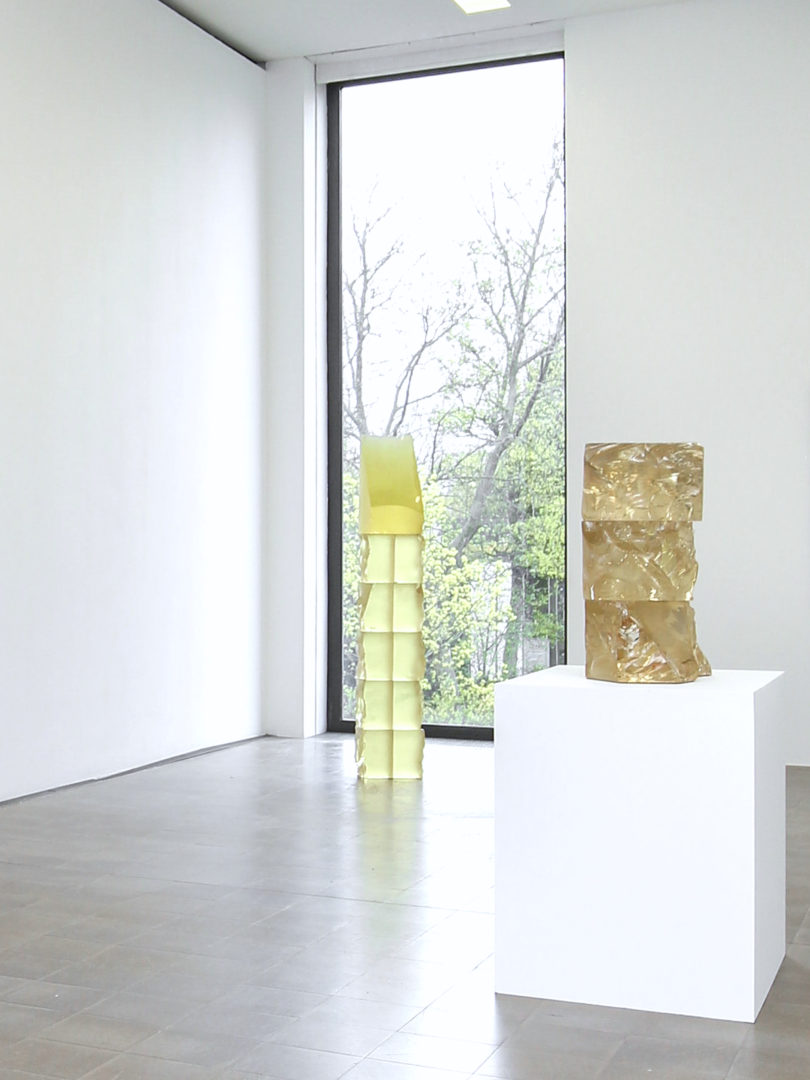Daniel Pommereulle and Mathis Altmann at Pasquart

Daniel Pommereulle : Flüchtig – Mathis Altmann : Individuality, centre d’art Pasquart, with the support of Christophe Gaillard Gallery (Paris), Coproduction : La Salle de bains, Lyon
Centre d’art Pasquart, Bienne, Suisse
23.04 – 18.06.2023
“Cruelty is nothing less than energy in a human being which civilisation has not yet altogether corrupted: it is therefore a virtue and not a vice1.”
These are the words of the Marquis de Sade, who, in 1795 was developing a new anthological attitude toward humankind, messily rejecting western establishment’s mores. For the writer, the notion of “cruelty” is far more than a purely negative and malicious force which is rooted in humankind, it is a synonym of resistance and of liberty. Aware of the liberating force of this energy, the artist Daniel Pommereulle (1937-2003) has taken notice of the paradoxical lesson of the fiendish marquis, making “cruelty” into the dynamic primary vector of his work and of his life.

Courtesy the artist and Fitzpatrick Gallery
Photo: Mathis Altmann
Artist, filmmaker, poet and performer, Daniel Pommereulle is an established and incredibly fascinating figure in the latter 20th century Parisian scene. Today, Pommereulle is more commonly known as having acted in a slew of French New Wave films, rather than for the extraordinary body of work he authored. Case in point is the glaring lack of works by the artist in the permanent collections of French institutions. This unjust disappearance of the artist has now been partially redeemed by the admirable exhibition at the centre d’art Pasquart in Bienne. This retrospective survey was organised by the curator Armance Léger, who is currently conducting in-depth research on the artist in preparation for a doctoral thesis. Daniel Pommereulle : Flüchtig therefore represents the foundations for the construction of a vast edifice of recognition and re-evaluation, which will be exciting to keep abreast of in the coming years. The exhibition’s strong point consists of the manner in which more than 50 years of an extremely rich body of work has been cleverly synthesised—evolving with the passage of time, it never loses sight of the constant presence of the dialectic of purgatory, of suppression, and of plenitude.
Daniel Pommereulle’s regard towards the 1960s-1970s is incisive. “The making of a work of art is, for me, a vain gesture, outmoded, which modern society and today’s human condition refute rather vigorously,” he declared. With a certain amount of urgency, he adopts a new language which is in phase with his times, by making the decision to break with a pictorial approach, like Marcel Duchamp, in favour of an object-focused art practice, also by joining the Objecteurs (Objecters) group, under the patronage of his friend, poet and art critic Alain Jouffroy. The group of artists produced assemblages based on contemporary urban folklore which solicit and activate the thoughtful consideration of the viewer. Pommereulle created hybrid artefacts, which were somewhere between objects made for consumption and sadistic torture instruments. The “Objects de prémonition” (1974-1975) a series of paint cans emptied of their contents and pierced with nails, knives, razors and scalpels. These unsettling and menacing works perfectly illustrate Antonin Artaud’s Theatre of Cruelty theory, of which the artist is a proponent. These cathartic works give rise to a double reaction in the viewer: one of attraction mixed with repulsion.

Courtesy Galerie Christophe Gaillard, Paris
Photo: Lia Wagner
Throughout his artistic career, Daniel Pommereulle has concentrated on the expansion of his conscience and perceptive abilities, in an attempt to capture the invisible flow of his mental energy. During a trip to Venice in 1962, Pommereulle discovered the effects of psychotropic substances. Under the influence of the drugs, the artist traced sinuous lines on paper which followed the vibratory states of his thoughts and sensations. The installation L’en-dedans pris (1965) (The Occupied Interior) follows a similar logic, because the arrangements of the white fiber contained in a sky blue container, swallowed in darkness and spot-lit by a bedside lamp, evoke the convolutions of the brain during a heroin trip. Vision is a recurrent and obsessive theme for Pommereulle. La Lupa (1975) is a telescope with a knife pointed intentionally toward the viewer’s eye. According to the artist, this visual organ should be pierced in order to develop a new way of seeing which would be completely disconnected from societal norms, by accessing the unconscious and other repressed imagery.
The film Fast (1969), which was produced in the Moroccan desert alongside the Zanzibar collective, is likely the most symptomatic of Pommereulle’s double approach which used “cruelty” and interiority. The short film intertwines trance scenes with images of stars and the cosmos, all of which are depicted against a soundtrack of tribal music. The artist appears in the frame, declaiming his disenchantment with the western world through a potent scream. The film continues with meditative shots of the planet Saturn. The work seems to be an interrogation directed at the sky.
Unfortunately, this search for an alternative way of life during the 1960s-1970s can nonetheless appear vain from a contemporary perspective. The term individuality, once associated with anarchistic libertarian ideals, has become the symptom of a dehumanising capitalist system. Pasquart director Paul Bernard’s choice to associate the dated works of Pommereulle with the transmedia installations of Berlin-based artist Mathis Altmann is particularly successful. The artist takes on the phenomena of liberalism’s neutralisation of the subversive potential of countercultures. The sculpture Individuality combines the circle A symbol with a kitsch aesthetic, a reflection of the artist’s voluntary intent to affirm his independence, while remaining aware of the derisive nature of his act. In the centre of the Poma space a kinetic pharmacy cross has been suspended, diffusing images referencing the theme of the devotion to work. This cross is an ironic reminder of the syndromes of hyperactivity present within the working world and the myth of well-being, and the art world is no exception.
1 Le Marquis de Sade, Philosophie dans le boudoir, volume I, third dialogue, 1795, Paris : Édition 10/18, 2001, p. 102.
______________________________________________________________________________
Head image : Daniel Pommereulle, Flüchtig – exhibition view Kunsthaus Centre d’art Pasquart 2023
Courtesy Galerie Christophe Gaillard, Paris
- From the issue: 104
- Share: ,
- By the same author: To Lose Oneself Without Fear in the Works of Carla Andra, Jeremy Deller at Rennes, Gaillard & Claude: hybrid objects, fluid forms ,
Related articles
Streaming from our eyes
by Gabriela Anco
Don’t Take It Too Seriously
by Patrice Joly
Déborah Bron & Camille Sevez
by Gabriela Anco

